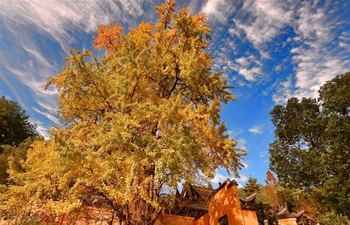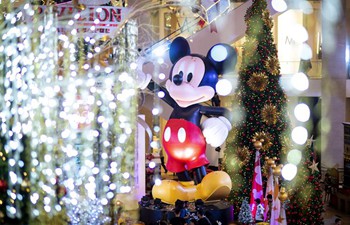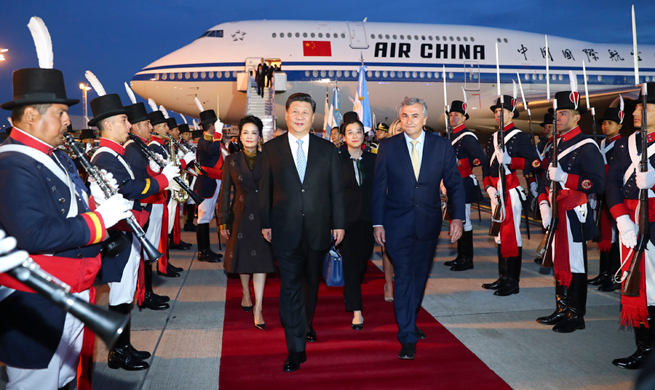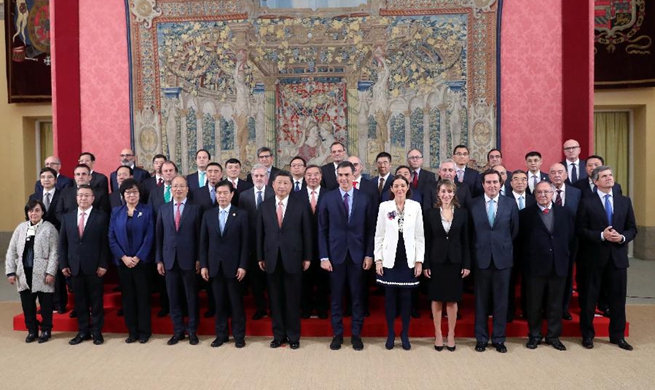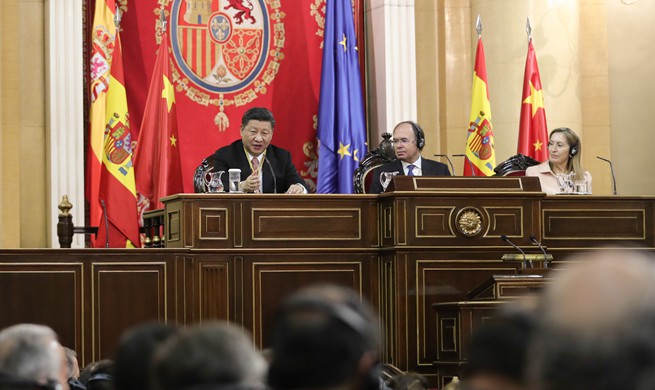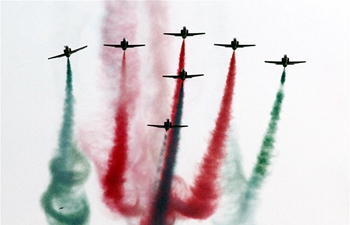by Mahmoud Fouly, Abdel-Magiud Kamal
LUXOR, Egypt, Nov. 30 (Xinhua) -- On a sunny day on the east bank of the Nile River and north of the world famous Karnak Temple Complex in Egypt's southern monumental city of Luxor, four Chinese archeologists have been inspecting the ruins of Montu Temple with Egyptian counterparts.
Some 20 workers have been clearing up the precinct of unwanted grass and plants to start joint excavation work.
It is the first excavation day of the first Chinese archeological mission in Egypt, an outcome of a protocol of cooperation recently signed between the Egyptian Ministry of Antiquities and the Chinese Academy of Social Sciences (CASS).
"Archaeological studies in China and Egypt are quite different given the unique features of the two brilliant civilizations," said Jia Xiaobing, head of the Chinese archaeological team in Egypt.
"Such joint missions will bring different theories and methods together and hence boost development of archaeological studies in both countries," the Chinese archaeologist told Xinhua at the site.
To reach the remains of Montu Temple, which is closed for visitors and cordoned with a yellow ribbon to prevent public approach, a person needs to pass through an avenue of 40 sphinxes, 20 on each side, then cross the main giant pylon of the Karnak Temple Complex.
Then one has to go through the complex great forecourt, turn left to cross the world's largest hypostyle hall of 134 huge columns representing the papyrus flower, and finally cross a ruined pathway northwards.
There, only two gate-like structures remained standing from the relics of Montu Temple, which was dedicated to the worship of ancient falcon-headed war god Montu, with huge damaged blocks scattered around the precinct.
Jia, also vice-director of the Department of Prehistoric Archaeology of the CASS' Institute of Archaeology, added that his team will try to figure out Montu Temple's plain layout, expansion, repair situation through cooperation with Egyptian archaeologists in the joint mission.
Dressed in beige and brown uniform with "Egypt-China Archaeological Mission" written on the back, the Chinese team currently consists of four members, but they are expected to increase to six or seven members over the coming few days, according to the team leader.
Gao Wei, a Chinese team member, said that the site is much bigger than expected, making it difficult to prepare the area for excavation.
"Since it is the first time for a Chinese mission here, we are in constant communication with our Egyptian counterparts to figure out better ways to get the job done," Gao told Xinhua.
The construction of the Karnak Temple Complex, one of the oldest and most famous pharaonic relics in Egypt, is believed to have started more than 4,000 years ago and took some 2,000 until the time the Romans took control of Egypt, with each of about 30 pharaohs had contributed with additions or demolitions to its buildings.
Mostafa al-Saghir, director-general of Karnak temples in Luxor, expressed his expectation of fruitful results of cooperation with the Chinese team, noting that the ruins of Montu Temple have been untouched for decades and that it is one of 14 temples in Karnak, the biggest of which is that of chief god Amun-Ra.
"The mission's work will focus on clearing up the site of unwanted grass and plants, surveying the precinct to locate its borders, studying the blocks with inscriptions to rearrange them and fix them in their right places then conducting the necessary reparation," he told Xinhua.
The mission's term is scheduled for three months in this season, according to Saghir, who is also a leading Egyptian team member.
There are signs of an avenue of sphinxes north of the Montu Temple besides other underground artifacts.
"Cooperation between Egypt and China in the field of archaeology completes their cooperation in various other fields," said Hosni Abdel-Wahhab, director of Temple Montu.
The beginning of the Egyptian-Chinese mission has been launched Thursday in the presence of Egyptian and Chinese officials, including Mohamed Abdel-Aziz, director-general of Upper Egypt's antiquities, Mohamed Yahia, director-general of Luxor antiquities, and Shi Yuewen, cultural counselor of the Chinese embassy in Cairo.
"The Chinese and the Egyptian peoples respect their history and cherish their heritage and civilization," Shi told the attendees during the opening ceremony marking the beginning of the mission's work.
"I am certain that the researchers of both sides will work hard together to find a new discovery in Montu Temple," the Chinese official added.
Karnak Temple Complex comprises a vast mix of decayed large temples, smaller ones, chapels, shrines and other buildings containing statues, pylons, columns, obelisks with painted walls covered with reliefs and inscriptions in brilliant jewel-like colors.




